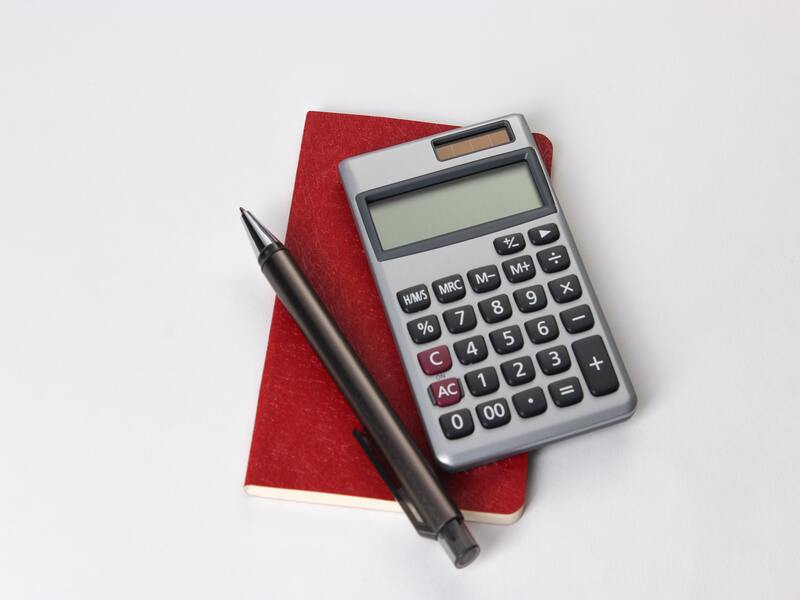The math of personal finance is one of the most important applications. Why? Because mathematics is used to rationalize information and evaluate alternatives.
Mixing mathematics and finance makes it possible to understand the current world. Making approximate mental calculations when faced with inflation, budgeting, credit, savings, debt, and investment, without a doubt, allows us to be one step ahead to make better decisions.
The Math of personal finance focuses on the real world of financial literacy and business objects. Every adult students need math of personal finance, including personal income, credit, loan and payments, taxes, checking saving accounts, purchasing a home, car, stocks, insurance, and retirement planning.
Students extend their investigations using advanced math of personal finance, like a system of equations and exponential functions. Those who do not love math and everything around it are simple guiding calculations for making a little sense of personal finance using simple math.
We hope this input helps everyone start, which you had left in the hands of their finance that helped you invest in mutual funds schemes or buy life insurance policies.
What are personal finances?
Personal finance refers to the management and administration of an individual’s money. And when you talk about administration and management, you are referring to income, expenses, savings, insurance, credit, and any situation or decision that involves money.
But what is money? Money is an asset accepted as a means of payment to exchange goods or services. Most of the time, we consider a person’s economic well-being equal to how much money he earns; however, economic well-being is more related to administration.
When money is spent without planning, knowledge, and excessively, no money is enough to have peace of mind and achieve financial health.
Studying personal finance allows you to apply some basic math concepts to everyday life, simple habits, and simple calculations that will help you plan and organize your money in order to achieve your goals in the short, medium, and long term. The more organized you are with your resources, the straighter your path will follow, and you will soon reach your goal.
Advantage the Math of personal finance
The math of personal finance influences the financial decisions we make every day. The math of personal finance is a part of our daily lives that helps us in everything from paying our bills to using coupons at the grocery store and more.
Number sense and math of personal finance concepts are advantages that are useful in banking. In addition, we use the math of personal finance for budgeting, spending, saving, and investing. Therefore, excellent knowledge of math concepts in each field will also benefit your finances.
We use the math of personal finance concepts daily when we use online banking to pay bills, transfer money, and manage our accounts.
Since banking refers to the management of money, we are all essentially bankers in our own everyday lives. Therefore, we plan a responsible budget to meet our needs without overspending. Therefore, math o personal finance is important to be aware of our spending habits.
The math of personal finance is important that bankers have a sound knowledge of basic quantitative concepts to get the of their investments. Understanding the basic principles will also help you get the most out of your money.
You may look at interest to make money or consider the impact of paying interest on a loan. This is a concept (math of personal finance) that we constantly experience in our daily lives.
Knowing the pros and cons of interest will help you become a smart banker. Understanding simple and compound interest and how it works for you is more complicated. Nevertheless, these mathematical principles are important in our daily lives and impact our financial future.
Again, bankers use the math of personal finance to help them understand and evaluate risk assessments. When dealing with stocks, bonds, or other investments, you need to understand these basic concepts to make wise investment decisions.
From the most key concepts of budgeting and spending to the more complex concepts of investing and interest, banking uses mathematics in our daily lives. However, we live in a world that has already done much math work for us.
However, you must have a solid understanding of the math of personal finance principles for managing your finances. A strong foundation in the math of personal finance will help you manage your money; it can help shape your financial future. Undoubtedly, the math of personal finance concepts plays a key role in our financial life planning and success.
The math of Personal Finance Literacy for Lifetime Financial Security
The math of personal finance is all about planning to meet financial goals while managing risk. Personal finance covers all aspects of income, expenses, assets, and liabilities. The math of personal finance seeks to answer money questions such as how much liquidity is appropriate and how much you should save.
We will highlight some easy personal finance mathematical metrics and how to calculation on an excel sheet and calculator using the raw data.
Savings:
Saving is the start of any financial journey and is quite the hardest process. You can’t get an investment without saving; that’s why the goal of personal finance is to ensure your income increases. The target is to save a certain percent of your income, not a nominal value. The measurement of the saving rate is simply a percentage of total income. For example, if you earn $1000 and spend $900, your saving rate is 10. The simple calculation is:
(Saving/total income)*100: (100/1000)*100=10%
Make sure what saving rate to adopt. The rule is to save 10% of your income but don’t practice if your budget is stretched. Instead, start small & adjust your budget to reduce your expenses or earn more to meet your target saving. Keep details about your spending journal or like an app that allows tracking back, and you can adjust your saving to raise your saving rate.
Simple calculation of saving interest account
Interest=P@R@T
P= Principal amount
R= Interest rate
T= Number of the time
If you save an amount of $10,000 that earns 2% interest each year, the formula would be: Interest=$10,[email protected]@1=$200
Cash flow:
Cash flow is essential for how much you earn and spend. If your saving rate is high, your cash flow will increase. If your saving rate is low, then your cash flow will be negative.
Note: Cash inflow less than cash outflow. Debt is income when calculating cash flow, which ensures you subtract out the cost of any debt incurred to attain that cash.
Formula and calculate for cash flow
CFF=CED-(CD+RP)
Here,
CED= Cash inflows from debt or equity
CD= Cash paid
RP= Repurchase debt and equity
Emergency Fund:
An emergency fund is set up to cover unforeseen events that require money to resolve a medical emergency. In addition, an emergency fund helps to avoid liquidating an investment portfolio to meet unplanned financial needs.
Emergency funds recommend 3-6 months of non-discretionary expenses like food and rent, and the fund is usually near-cash assets.
Non-discretionary expenses divide liquid assets to calculate an emergency fund. For example, let’s assume non-discretionary expenses to be $100,000 every month and have accumulated $300,000 in liquid assets. Then the emergency fund ratio will be $300,000/$100,000 or 3.
That means the finance can support you 3 months of emergency spending without another inflow. The key to the math of personal finance is accurately determining non-discretionary expenses.
Note: An emergency fund ratio 3 times is preferred.
Net Worth:
Net worth is a straightforward calculation: Net worth = Total Assets- Total Liabilities.
All of your assets segmenting into income-earning and non-income-earning assets. Thus, a home you own and rent out will be an income-generating asset, while gold will be a non-income-generating asset. Similarly, buying a car with a bank loan will be an interest-bearing liability, and a 0-interest loan from your employer will be a non-interesting liability.
Debt to Asset Ratio:
Debt to Asset Ratio= (Total Debt/Total Assets)
Debt is extremely important; it allows the acquisition of assets in a cash payment. For some assets like a home, the cash cost is high that it makes sense to leverage up to gain it. Therefore, debt is only advisable to buy assets that generate income and reduce expenses. The measure of use debt to asset ratio, which total liabilities/ Total is expressed as a percentage.
If we calculate your total liabilities at a value of 25m while total assets at 30m, the debt ratio will be 25/30 or 83%, meaning 83% debt finances assets. The main objective of debt is to tend down the level of debt gradually. So when you approach retirement, you must significantly eliminate your interest-bearing debt.
Debt Coverage Ratio:
Debt Coverage Ratio= Net operating income/Debt service
The debt coverage ratio measures how much liquid cash income meets your debt obligations. For example, if you have earned $100.000 one month and have two loans: an auto loan of $2500 and a mortgage of $2000 a month, then your debt coverage ratio will be ($100,000/$2500+$2000), ($100,000/$4500) or 22 times cover.
That means your total income can cover the interesting paying obligation 22 times is significant. A negative coverage ratio will indicate your current cash income will notably repay your existing debt.
Rules Math of Personal Finance Ratio Calculation
01. Rule o 100: Risk appetite is personal and subjective to every individual. A device has yet to be invented to read the level of risk you can take while planning finances.
Rule of 100 is that you reduce your age from 100 & we can use the outcome as the maximum amount of investment in the market like equity, mutual funds or ULIP, or other products. So, for example, if you are 30 years old, 70% (100<30) of your investible corpus can be invested in market-linked products.
02. 100=40:30:20:10:- If you earn 100 in a month, you should spend 40 of your livelihood needs at most. 20 should be for all additional lifestyles, like travel or entertainment. The balance of 10 is to be kept to take your emergency needs. The rest of the 30 is to be invested in your future goals and retirement, which will keep you hopeful of a better tomorrow.
03. Rule of 72: This is a simple hack to know if you take the return of any investment and divide by 72. The answer tells you how long it takes before the investment can double. If you invest in an apartment of 10 rooms and it costs N 10m to build and expect an 8% return from this rental property, how long before you double your N 10m?
The calculation is an interest rate of 8%, then divided 72/8=9. So it will take 9 years to double your investment, meaning 100 will become 200 in 9 years.
04. Rule of 114: Use the rule for the number of years required to triple your money at a particular interest rate. If the interest rate is 8%, then you should divide 114/8=14.25 will take 14.25 years to triple your investment, meaning 100 will become 300 in 14.25 years.
05. Rule of 144: Using the rule for the years required to four times your money at a particular interest rate. If the interest rate is 8%, then you should divide 144/8=18 will take 18 years to quadruple your investment, meaning 100 will become 400 in 18 years.
I hope these ratios and rules make sense in calculating personal finance math and be used in your life depending on the context.








